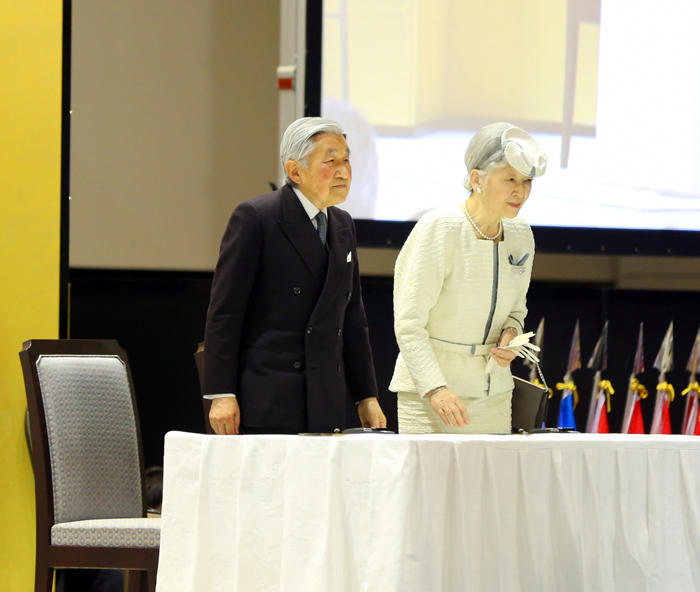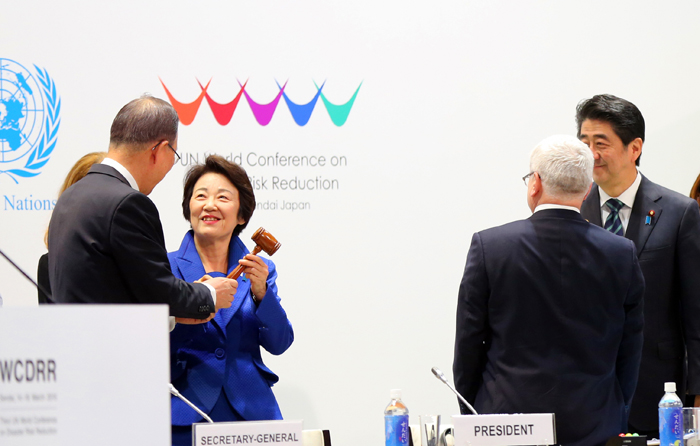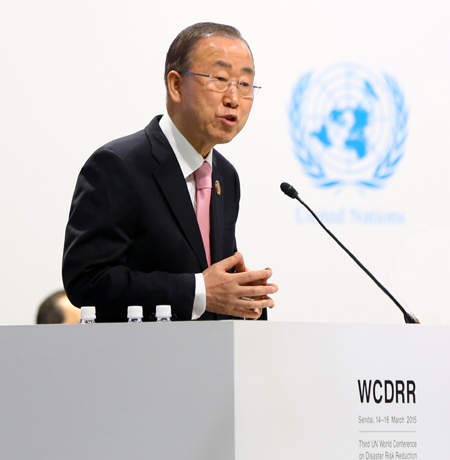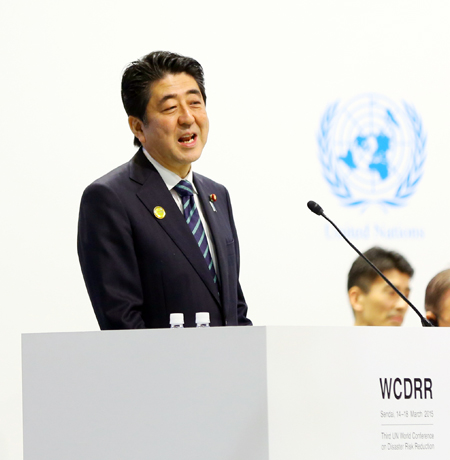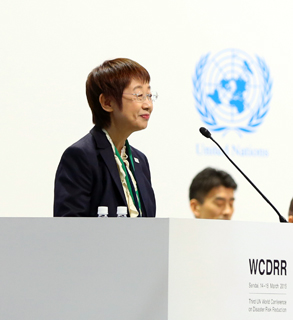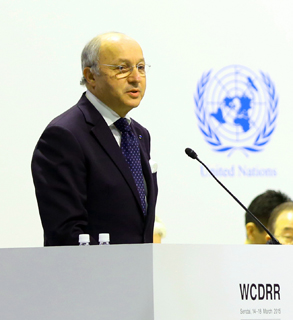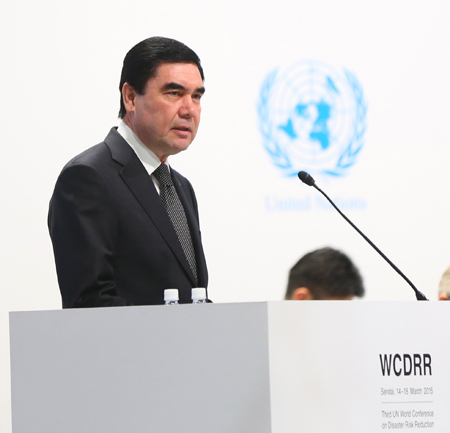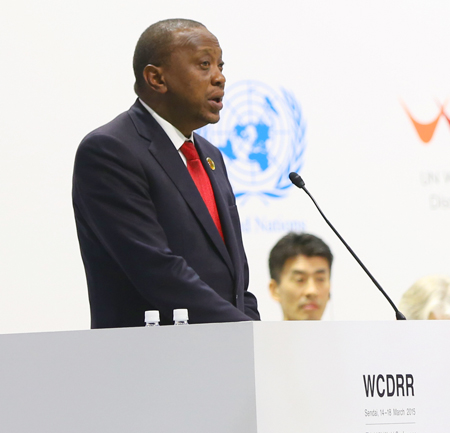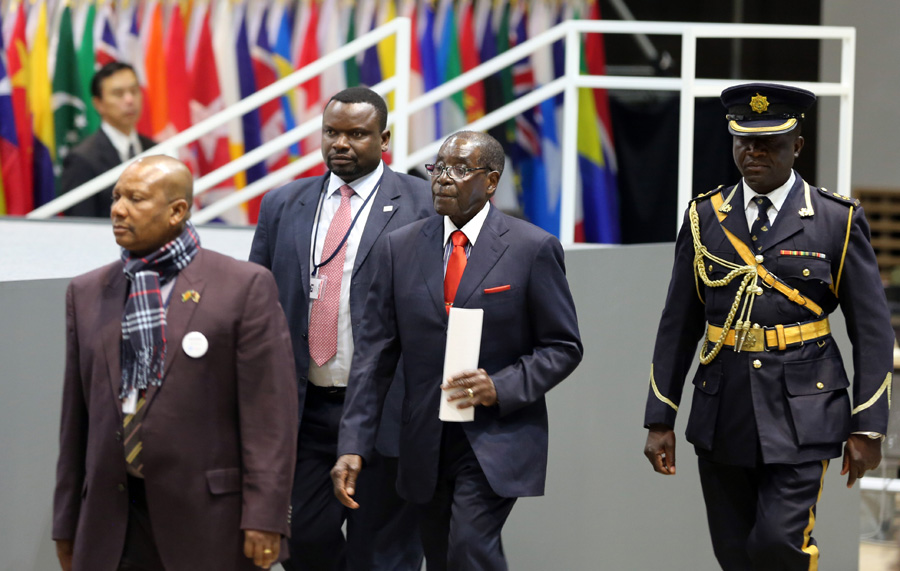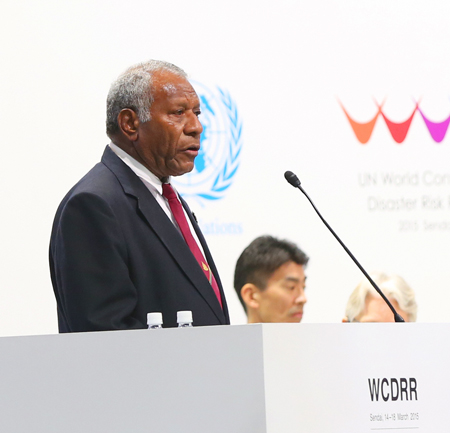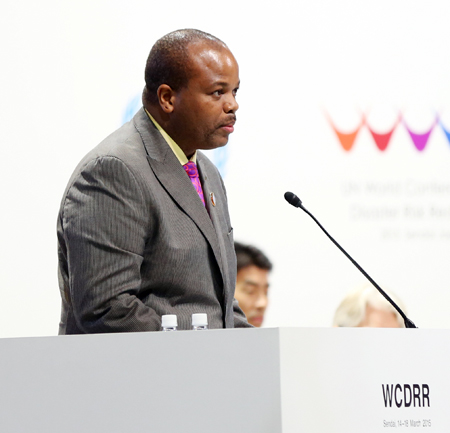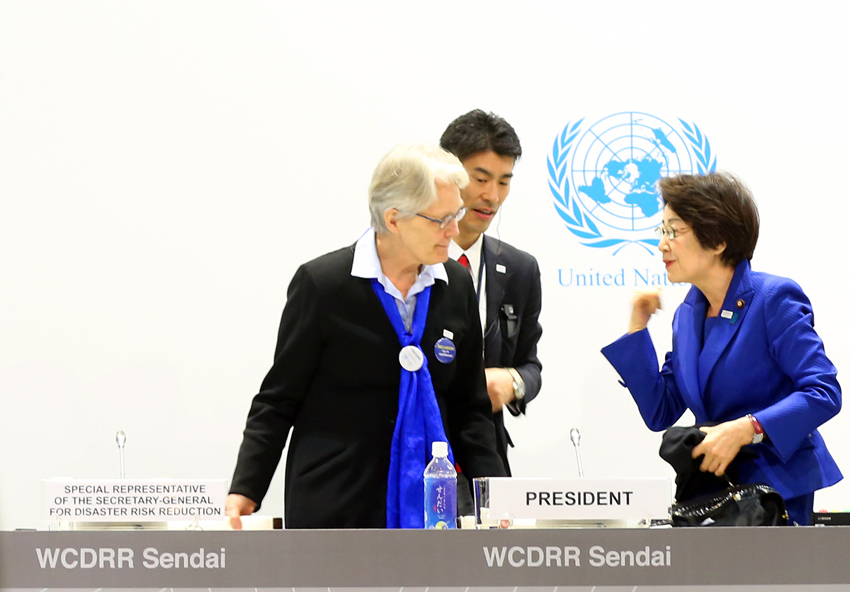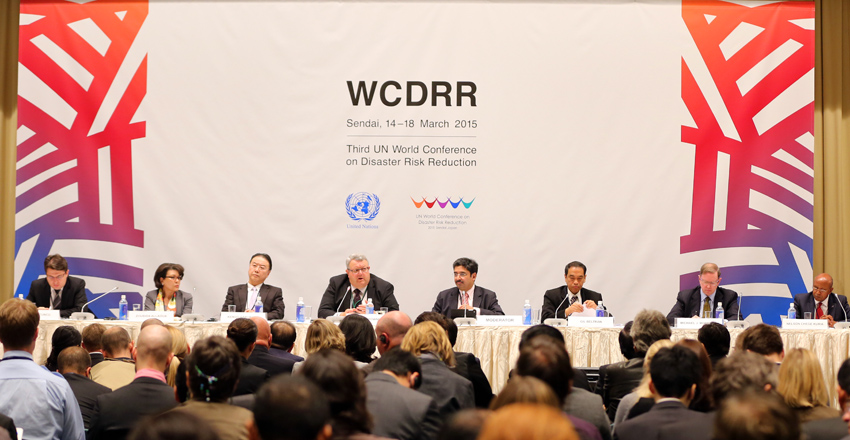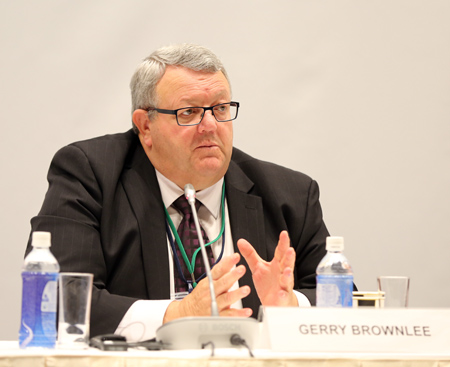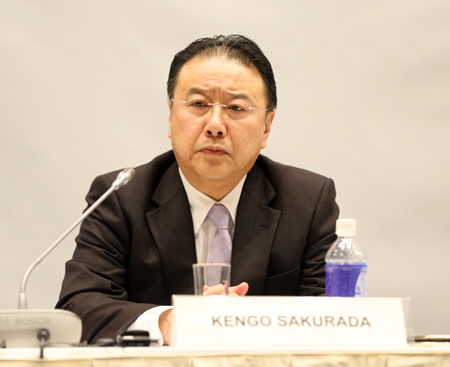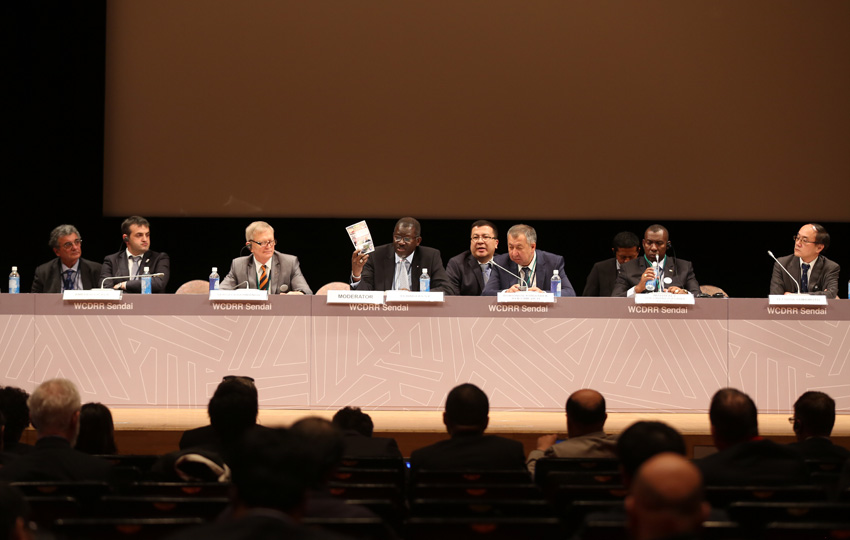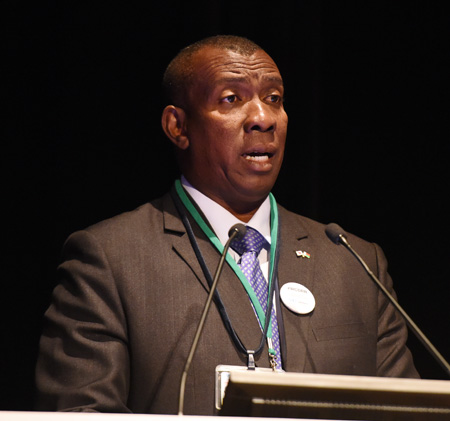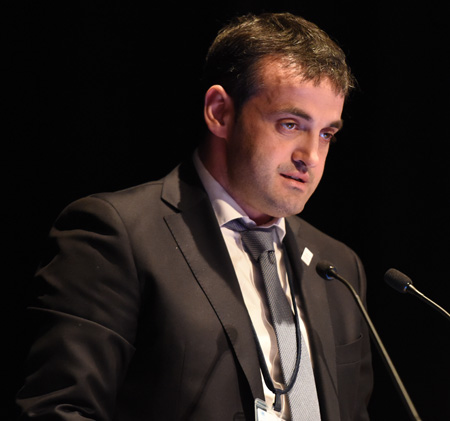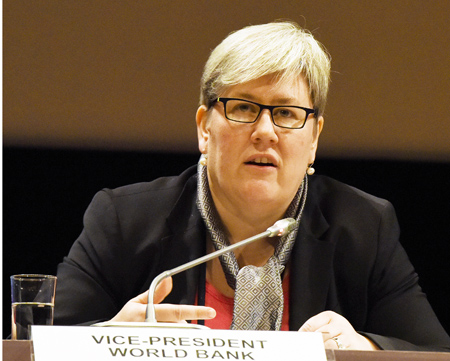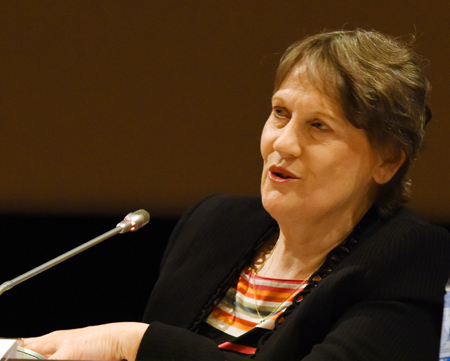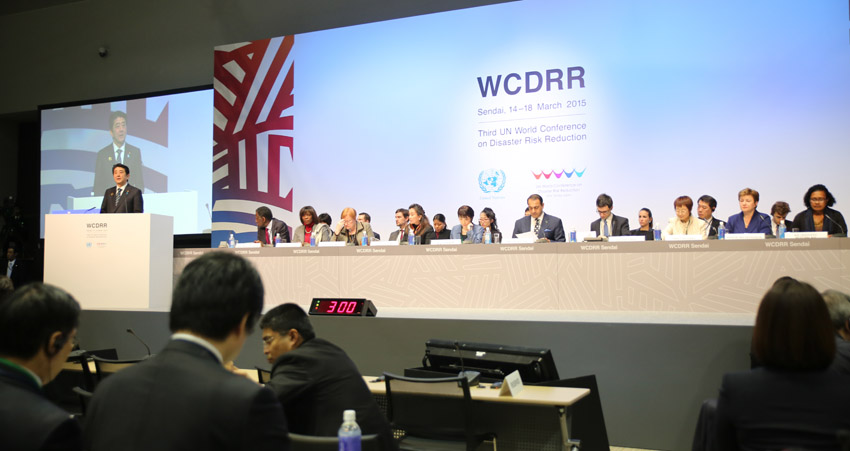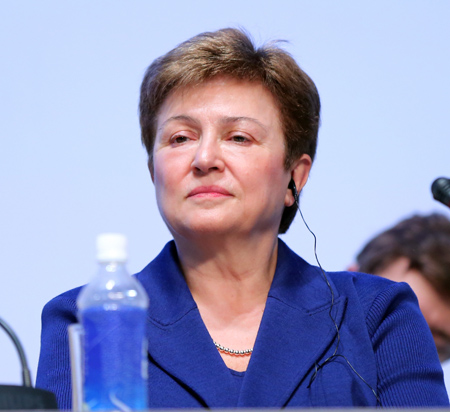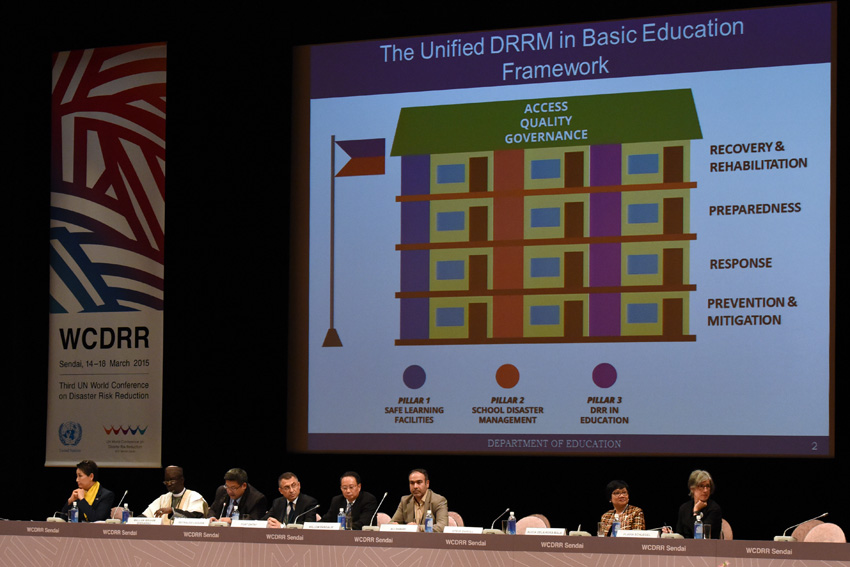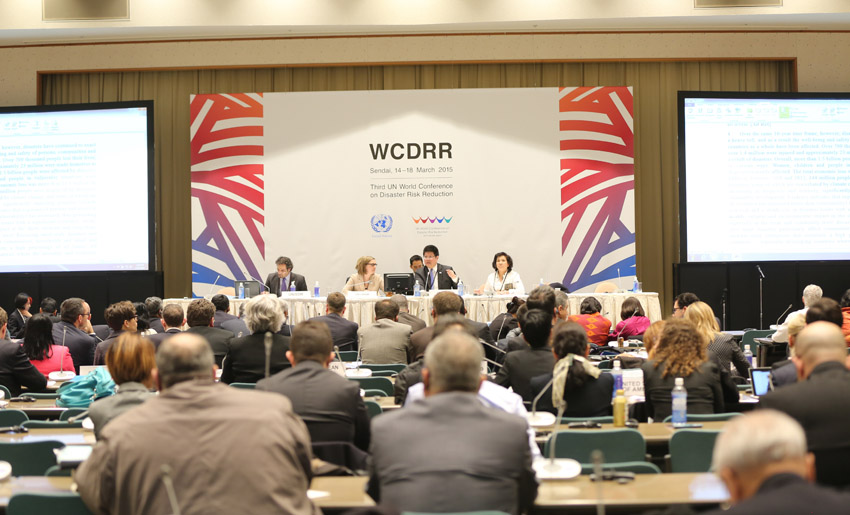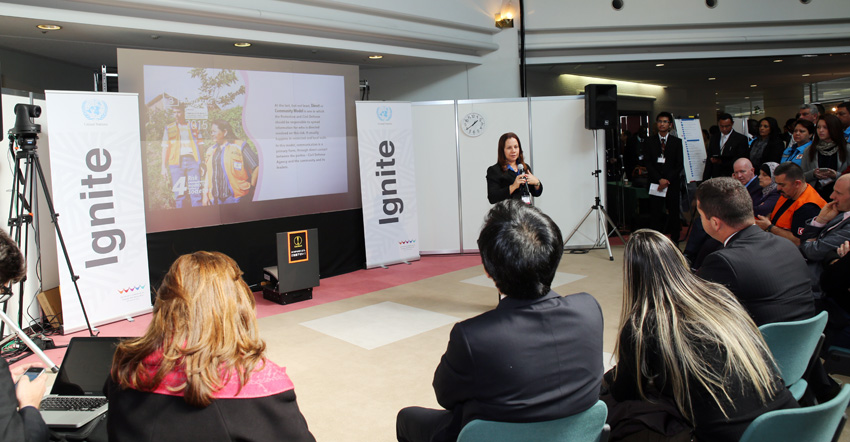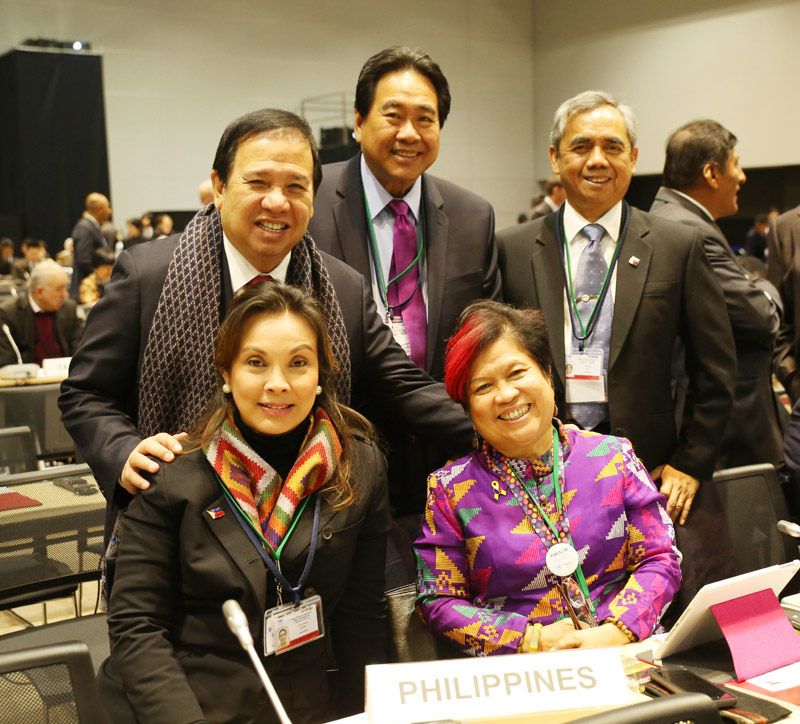|
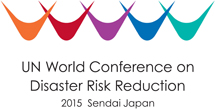 The third UN World Conference on Disaster Risk Reduction opened today in Sendai, Japan, attended by Emperor Akihito and Empress Michiko of Japan, around 20 Heads of State and Government, and many country delegations, and 8,000 participants. UN Secretary-General Ban Ki-moon, Prime Minister of Japan Shinzo Abe, and many other dignitaries addressed the Conference.
The third UN World Conference on Disaster Risk Reduction opened today in Sendai, Japan, attended by Emperor Akihito and Empress Michiko of Japan, around 20 Heads of State and Government, and many country delegations, and 8,000 participants. UN Secretary-General Ban Ki-moon, Prime Minister of Japan Shinzo Abe, and many other dignitaries addressed the Conference.
Delegates at the opening plenary elected Eriko Yamatani, Minister of State for Disaster Management, Japan, as conference president. Yamatani noted that the Hyogo Framework for Action (HFA) has functioned as an effective guideline since its adoption, but that some gaps remain to be addressed in a strong post-2015 framework on DRR. Secretary-General Ban urged all concerned to ensure an ambitious outcome at the WCDRR.
Prime Minister Abe announced Japan’s contribution of US$4 billion for the Sendai Cooperation Initiative for DRR, which will focus on institution-building, material assistance and the promotion of regional cooperation.
Laurent Fabius, incoming president of the 21st Session of the Conference of Parties to the UN Framework Convention on Climate Change (UNFCCC COP 21), launched an appeal to assist the most vulnerable through a “Climate Disaster Warning” mechanism.
After the opening ceremony, delegates dealt with organizational matters and engaged in an exchange of views. Several high-level delegates emphasized the links between international discussions and negotiations on DRR, financing for development, climate and the post-2015 development agenda. In the afternoon, a high-level multi-stakeholder partnership dialogue on “Mobilizing women’s leadership in disaster risk reduction” convened, and several working sessions took place on topics including technological hazards, disaster risk transfer and insurance, and commitments to safe schools.
Delegates agreed to form a Main Committee to negotiate and finalize the draft post-2015 framework on DRR, which met in the afternoon.
|
|


